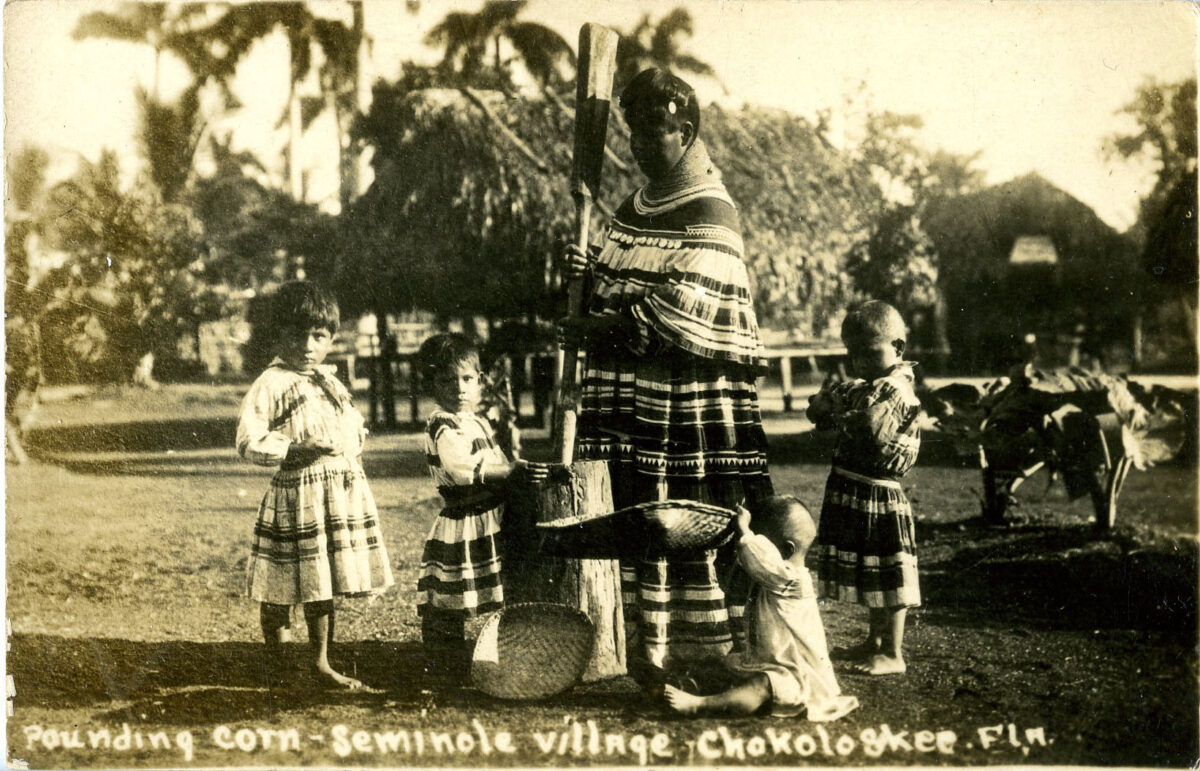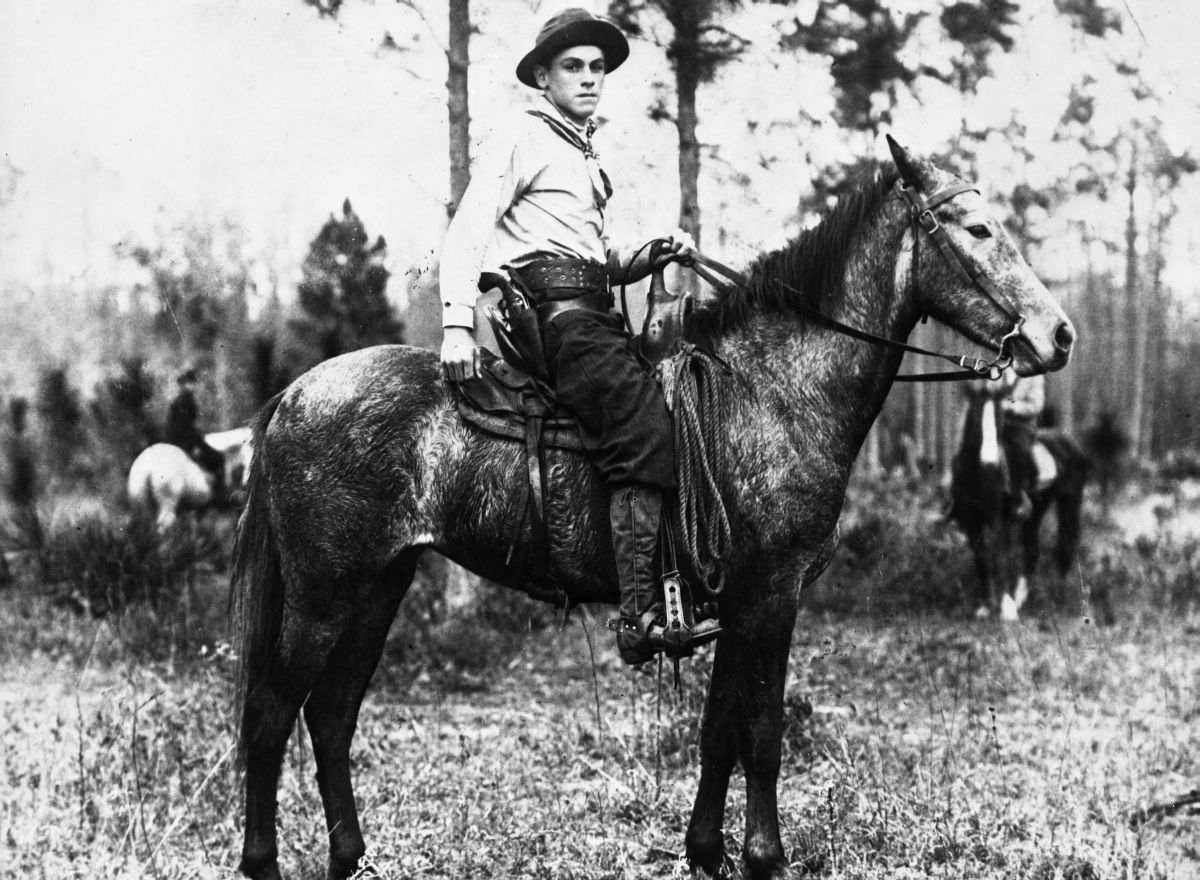
Critter Count: Fauna of Big Cypress National Preserve
Critter count! This week, join us as we delve into Big Cypress National Preserve, discovering its diverse animal inhabitants and the enduring legacy it holds as the ancestral home of Seminole and Miccosukee communities. How many of these diverse and wild species of critters have you spotted? Summer is a great time to get out into nature and explore some of Florida’s unique and exciting natural resources. So, get outside and count some critters!
All images, unless otherwise noted, were taken in Big Cypress National Preserve and uploaded via their official Flickr account. They are in the public domain.
Seminoles and Big Cypress National Preserve
The Big Cypress National Preserve encompasses 729,000 acres of Everglades swampland. This freshwater swampland supports many unique species, including a mix of temperate and tropical plants and wildlife. Highly biologically diverse, the preserve protects 35 species of mammals, 190 species of birds, 50 species of reptiles, 18 species of amphibians, 66 species of fish, and countless invertebrates. While some of these species prefer drier habitats, they have adapted to the safety found in the Big Cypress Swamp.
In fact, Big Cypress was one of the first ever national preserves, established in 1974. Functionally, a national preserve is slightly different from a national park, and people can utilize the space differently. National preserves are multi-use lands, and intended to protect natural resources while still allowing some resource stripping activities. These range from hunting, mining, cattle grazing, and off-roading.
Seminoles and their ancestors have lived in, utilized, and protected Florida’s resources longer than recorded history. It is increasingly important that their culture, ways of life, and cultural practices be respected and supported as Florida’s first people. One of the most unique and protected parts of the makeup of Big Cypress National Preserve is the traditional rights the Seminole and Miccosukee people hold within its boundaries.
In a previous blog post, we explored what customary use rights are, and what that means for these communities in Big Cypress. While tightly regulated, these rights allow Seminole and Miccosukee people to utilize resources, continue traditional cultural practices, and occupy Big Cypress National Preserve as their ancestral home. Particularly, this includes things like plant and animal harvesting, ceremonial practices, and hunting, fishing, and trapping. These rights also give these communities first rights for developing businesses within the preserve.
What might you see?
While Seminoles have enhanced rights within the boundaries, the average visitor can also experience and enjoy Big Cypress National Preserve in a variety of ways. From biking, camping, hiking, to off-roading, Big Cypress National Preserve is an exciting natural resource that entices over a million visitors annually. But, what might you see in the preserve? Below, get a sneak peek at eight interesting critters that call Big Cypress home!
Alligators
Alligators are one of the most recognizable and exciting creatures that call Florida home! They have lived in Florida’s swamps, rivers, and waterways for centuries, and are found all throughout the Sunshine State. Here, you can see two juvenile alligators resting on a log lounging on each other. With short legs and a broad snout, they also have distinctive bony plates called “scutes” that armor their bodies.
While they are dark brown to green as adults, juveniles like you can see below are black with yellow stripes for camouflage. Babies will remain with their mothers for up to three years! As carnivores, alligators make opportunistic hunters. They are known to eat snails, invertebrates, turtles, fish, birds, frogs, mammals such as raccoons and white-tailed deer, and even smaller alligators.
If you are looking to add alligators to your critter count, you are in luck! They are a prolific species found predominantly in freshwater lakes, swamps, marshes, canals, and rivers. While visiting Big Cypress, it would not be surprising to see dozens of these reptiles swimming through the water and lounging on the bank. But, make sure to give these apex predators their space. While large, they are incredibly fast when they want to be, and their bite is the strongest-measured bite of any living animal.
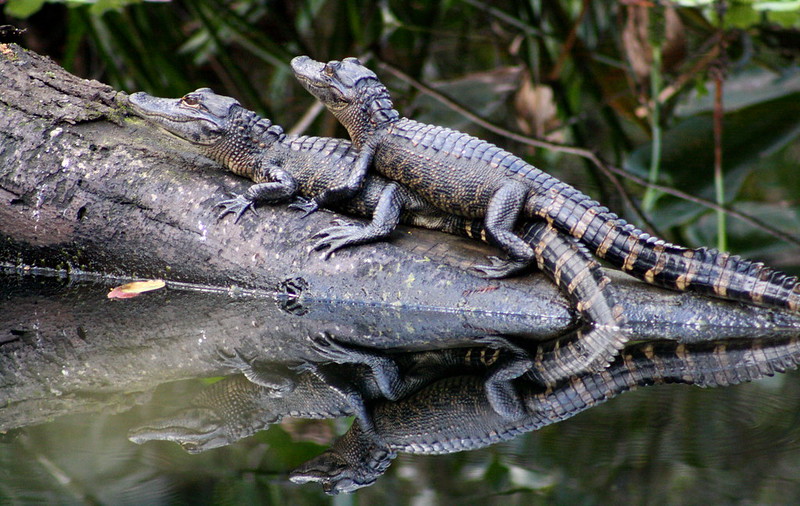
National Park Service, Big Cypress National Preserve, via Flickr
Florida Panthers
Majestic and endangered, Florida panthers have struggled with encroaching human populations over the past few hundred years. Accustomed to wide ranging habitats, the development of roads, canals, and increasing human populations have splintered and decimated their historic range. Males tend to have a range of 200 square miles, while females have a range of about 75 square miles. Unfortunately, today’s Florida panthers live in only 5% of their historic range, mostly staying within the protected areas of Big Cypress National Preserve, Everglades National Park, the Florida Panther National Wildlife Refuge, and other natural areas in South Florida. Tawny brown, panthers tend to have black tips on their ears and tails. Florida panthers are carnivores, and predominantly subsist on white-tailed deer and feral hogs. While they tend to prefer drier climates like hardwood hammocks and pinelands, panthers have adapted to live in the swamplands.
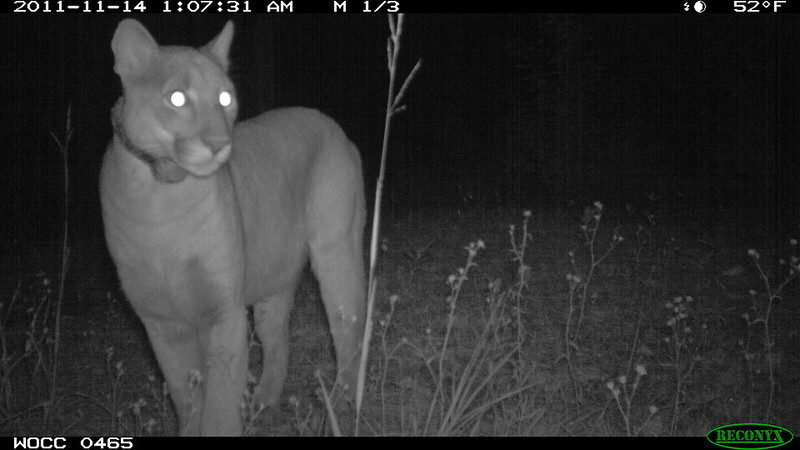
Photo courtesy of Karen Meeks, White Oak Conservation Center
Above, you can see a Florida panther on a trail camera at the White Oak Conservation Center. The Conservation Center rehabilitated the panther before returning him to Big Cypress National Preserve. Located in Yulee, Florida, the conservation center is “focused on saving and recovering populations of rare species, building assurance populations, researching animal health, convening experts, and educating the next generation.” Places like this, and the Florida Panther Wildlife Refuge, are committed to supporting and rehabilitating the panther population. At its most critical point, only a few dozen remained left in the wild. Since then, the population has rebounded to a few hundred. But, if you can catch a glimpse of a Florida panther on your visit, you are very lucky! Due to low population and reclusive tendencies, most people will not be able to see a Florida panther in the wild.
Big Cypress Fox Squirrel
These seemingly innocuous mammals are actually incredibly unique and come in a variety of colors from orange to tan or even black. Known for their long bushy tails and strong legs, Big Cypress fox squirrels have a white nose and ears. While other Eastern fox squirrels can be found throughout the Southeast, the Big Cypress fox squirrel has a much smaller range. Big Cypress fox squirrels only live in peninsular Florida, south of the Caloosahatchee and west of Lake Okeechobee. This unique subspecies prefers to live in “pine forests, cypress swamp forests, tropical hardwood forests, oak woodlands, coastal broadleaf evergreen hammocks, and mangrove swamps.” Big Cypress fox squirrels eat pinecones, seeds, insects, berries, fungi, and other fruits and leaves.
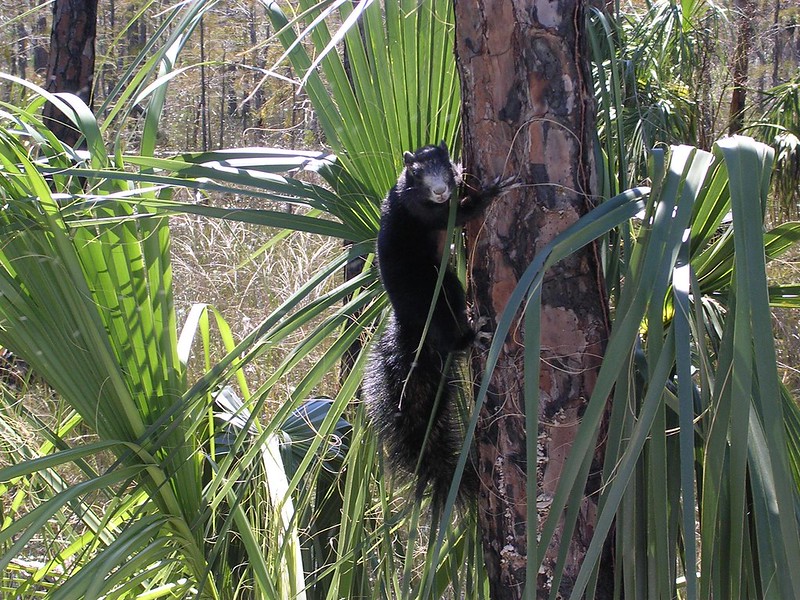
National Park Service, Big Cypress National Preserve, via Flickr
They are primarily threatened by habitat loss, and protection of the species is currently a priority in the area. Prior to this, they were a game species for a number of years before habitat fragmentation and hunting decimated the population. Hunting of the Big Cypress fox squirrel was banned in 1972, and they are considered a threatened species.
If you want to add the Big Cypress fox squirrel to your critter count, the Big Cypress National Preserve offers a few tips to seeing this important squirrel! They note that the best time of day to see them is between 9am and 4pm, and they prefer pine forests and cypress swamp forests. Be on the look out for pinecones or cypress seed cones, which are preferred meals.
The best areas within the preserve to spot them are:
- Loop Road: Near Sweetwater Strand and the Loop Road Environmental Education Center.
- Burns Lake Campground: Search the cypress trees along the western edge of the lake for Big Cypress fox squirrel stripped cypress bark nests.
- Turner River Road: From H.P. Williams Roadside Park to Wagonwheel Road.
- Bear Island Campground: Focus your search on cypress-associated habitats.
- Kirby Storter Boardwalk: Look within the cypress dome towards the end of the boardwalk. This option is especially good for those with differing abilities or families, as the boardwalk is right off the road and only one-mile long.
Bears
Did you know there are bears in Florida? Here, you can see a Florida black bear spotted on Turner River Road. Unlike other sub-species of black bears, Florida black bears are always black. Males can weigh as much as 450 lbs., with females topping out at about 250 lbs. They live comfortably in a variety of habitats, including hardwood hammocks, pinelands, and swamplands. Interestingly, while they do eat meat, they are not big hunters. Most of the meat Florida black bears consume is scavenged. They are omnivores, with approximately 80% of their diets coming from plants, 15% from insects, and 5% from meat. Bear cubs will stay with their mothers for about two years.
For safety reasons, we encourage you to Be Bear Aware, and not seek out Florida black bears or approach them in any way. Secure all food in bear canisters and dispose of trash in bear secure receptacles. Bears are incredibly intelligent, with good memories, and securing food and other consumable items goes a long way towards being safe in their environment. Most bears try to avoid humans, and it is rare for a bear to injure someone in Florida. If you see a bear from a distance, enjoy the experience but do not move closer, run, or make any sudden movements. Calmly move to a secure area.
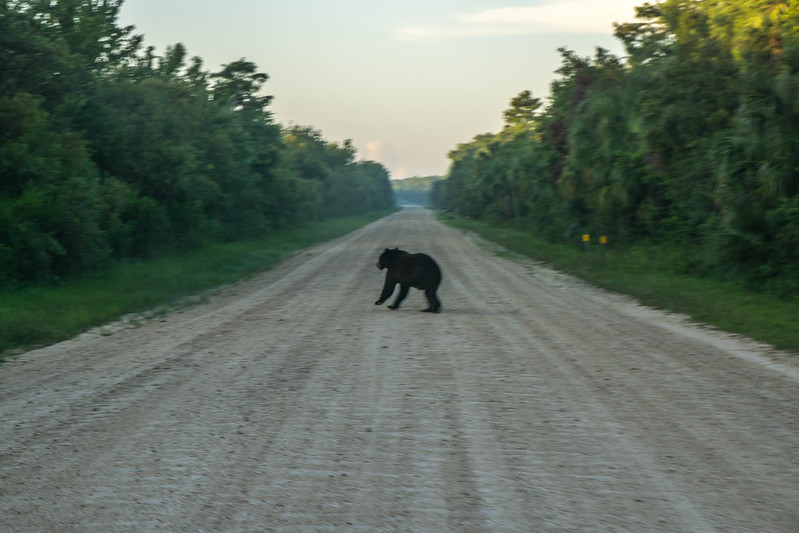
National Park Service, Big Cypress National Preserve, via Flickr
Turtles
There are several species of turtles within the preserve, including this Florida softshell turtle you can see below crossing the road. Softshell turtles have flat, rubbery bodies and a narrow, distinctive nose. They can be olive to dark brown in color. Softshell turtles are found throughout the state of Florida and other parts of the Southeast. Females tend to be much bigger than males, and can be as much as two-feet long! Florida softshell are carnivores. They are known to eat snails, fish, mollusks, crayfish, insects and other invertebrates, frogs, other turtles, snakes, and even birds and ducks.
Looking to spot one on your visit? Generally, they live in slow-moving waterways like ponds, lakes, swamps, and canals. Often, you can spot them sunning themselves on logs or the bank. These turtles tend to prefer sandy or muddy-bottomed bodies of water, as they conceal themselves in the muck during the winter months. If you see one, stay clear! These turtles can be aggressive.
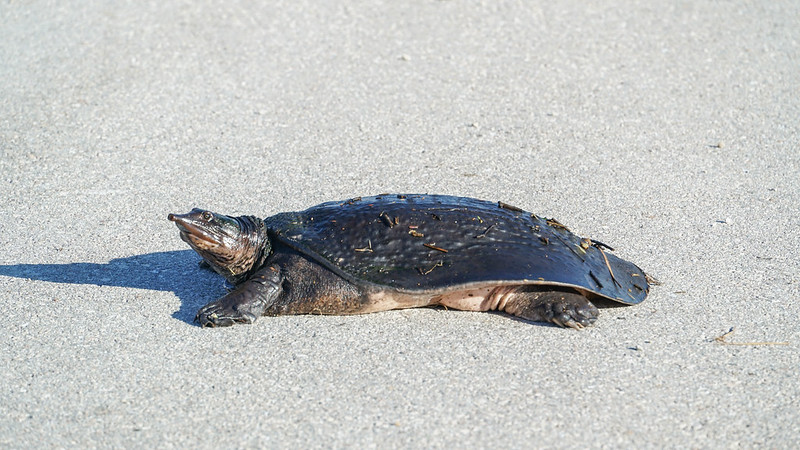
National Park Service, Big Cypress National Preserve, via Flickr
Snakes
Snakes are a part of life in Florida. Thankfully, many (like this Eastern ratsnake seen below) are non-venomous. While not dangerous to people or animals, they will bite if they feel threatened. These colorful snakes can range from rust, yellow, orange, tan, or grey. Snakes live in pinelands, hardwood hammocks, cypress strands, swamps, marshes, prairies, and agricultural fields. Other common snakes you may find are black racers, red cornsnakes, watersnakes, and kingsnakes. Venomous snakes found throughout Florida include cottonmouths, eastern diamondbacks, timber rattlesnakes, coral snakes, copperheads, and pygmy rattlesnakes. Generally, their colors and patterns camouflage them within the understory. If you see a snake, look but do not approach!
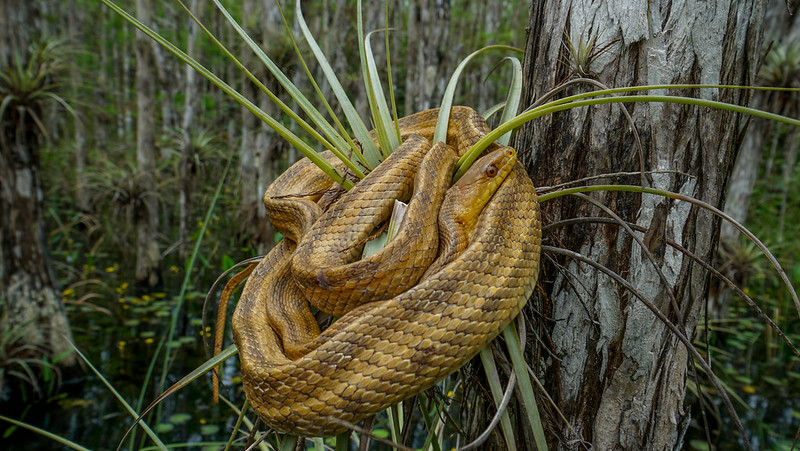
National Park Service, Big Cypress National Preserve, via Flickr
Birds of Prey
Birds of prey, hawks, and falcons are found throughout Florida, and there are many diverse species found under this umbrella. Here, you can see a red-shouldered hawk observing from a red maple tree. Red-shouldered hawks are monogamous, and often return to the same nest year after year. A medium sized raptor, they can be aggressive when people get too close to their nests. They live in forested areas like cypress swamps, mixed forests, and along the edges of waterways.
Very good hunters, they eat small mammals, reptiles, amphibians, fish, crayfish, and even other birds. Other raptors, hawks, and falcons that you may spot are ospreys, kestrels, short-tailed hawks, barred owls, burrowing owls, golden and bald eagles, merlins, Cooper’s hawks, red-tailed hawks, snail and swallow-tailed kites, and sharp-shinned hawks.
But, if you want to spot a falcon or hawk in Big Cypress National Preserve, you need to look up! These sharp-eyed birds hunt from perches, gliding down to catch their prey. To increase your chances of spotting and identifying one, search along the edges of waterways, rivers, or ponds where food is plentiful.

National Park Service, Big Cypress National Preserve, via Flickr
Wading Birds
Wading birds are uniquely adapted to the swamps and waterways that make this space unique. With long legs and strong, long necks adapted for striking, places like Big Cypress National Preserve are ideal for wading birds. Below, you can see a tri-colored heron wading through shallow water in Big Cypress National Preserve. Tri-colored herons have a mix of blue-grey and lavender on their heads turning into a white belly. Often, they nest in trees in standing water, or on islands.
Primarily fish eaters, they forage in both salt and fresh shallow water. Incredibly good hunters, they have a variety of techniques to actively entice and pursue fish. In addition, other very recognizable wading birds you may see in Big Cypress National Preserve are great blue herons, green herons, great egrets, snowy egrets, little blue herons, white ibis, wood storks, and the bright shocking pink of roseate spoonbills.
Most likely, you will not have a problem adding these wading birds to your critter count! You can spot them in shallow, slow-moving water such as ponds, swamps, and canals with both salt and freshwater.

National Park Service, Big Cypress National Preserve, via Flickr
While enjoying this precious resource, we encourage you to reflect on how you interact with the natural ecosystem. Specifically, plan your visit with the least amount of impact on the plants and wildlife as possible! Remember, this is their home, and you are a visitor. As you can see, a number of different species call Big Cypress National Preserve, and the Everglades, home. So, how many critters can you count on your trip out to BCNP?
Author Bio
Originally from Washington state, Deanna Butler received her BA in Archaeological Sciences from the University of Washington in 2014. Soon after, Deanna moved to South Florida in 2016. Soon, she began working for the Seminole Tribe of Florida’s Tribal Historic Preservation Office. Deanna was the THPO’s Archaeological Collections Assistant from 2017-2021. While at the THPO, Deanna worked to preserve, support, and process the Tribe’s archaeological collection. She often wrote the popular Artifact of the Month series, and worked on many community and educational outreach programs. She lives in Fort Myers, FL with her husband, son, and dog.


